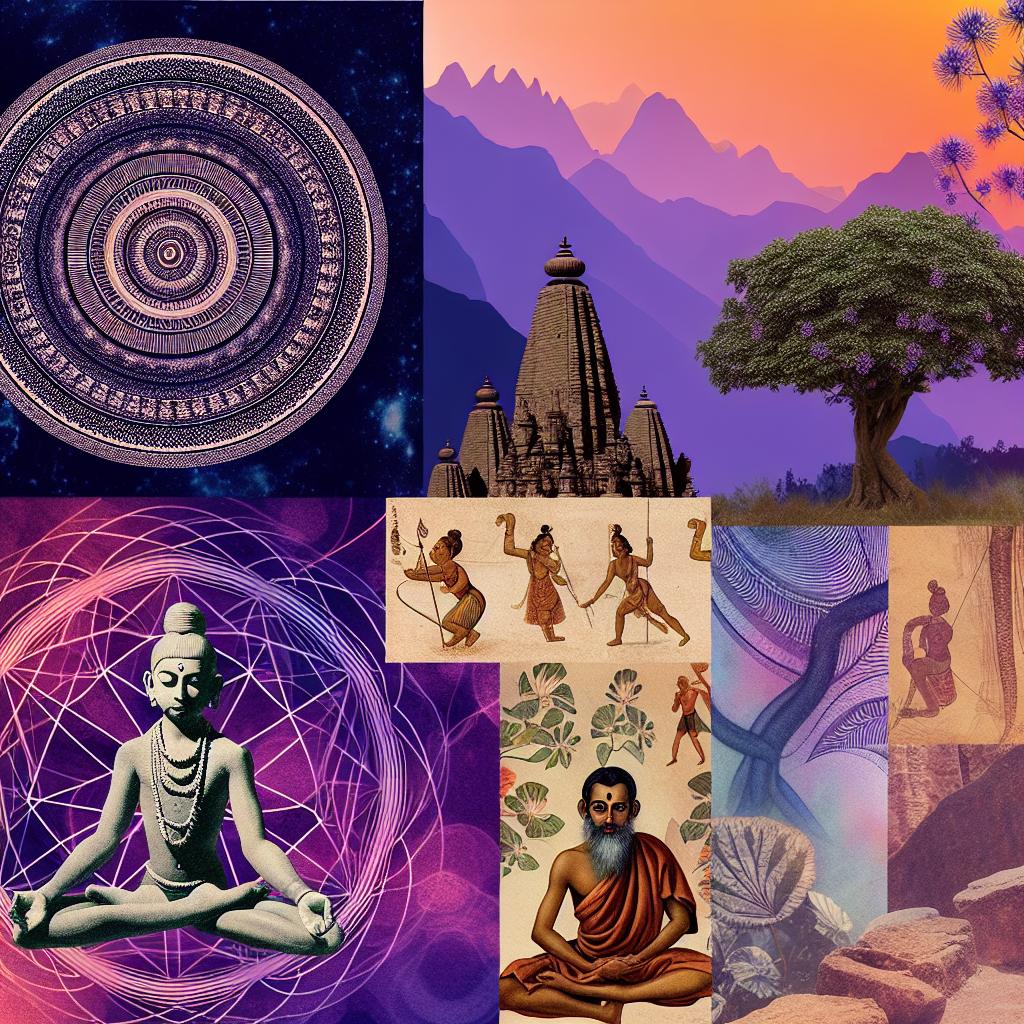Pranava yoga is meditation on the sacred manta Om or Aum, . Key sources for the practise are the Upanishads, the Bhagavad Gita, and the Yoga Sutras of Patanjali.
Om (or Aum) is considered a sacred syllable which both symbolized and embodies Brahman. By correctly using Aum in meditation, the yogi can reach more and more subtle level of awareness and regain union with Brahman.
“What world does he who meditates on Aum until the end of his life, win by That? If he meditates on the Supreme Being with the syllable Aum, he becomes one with the Light, he is led to the world of Brahman [the Absolute Being] Who is higher than the highest life, That Which is tranquil, unaging, immortal, fearless, and supreme.” — Prashna Upanishad 5:1.5.7

Doing pranava yoga
The mantra Om (or Aum) is continously repeated in unison with the practitioners breath.
The mantra Aum in Hinduism
In Hinduism, the sound Aum is believed to be the primordial sound from which the universe was created. Aum is the most sacred of holy words, and thus considered the supreme mantra.
In some contexts, Aum is referred to as Shabda Brahman, i.e. God as Sound or God as Vibration.
Aum is also called Pranava. The Sanskrit word Pranava means both controller of life force (prana) and life-giver (infuser of prana).
The term mantra
The word mantra is derived from the Sanskrit expression “mananaath thraayathe” which means “that which, when thought, carries one across”. (Across the wordly ocean of sorrow.) More loosely, “mananaath thraayathe” is sometimes translated as “a transforming thought”.
In Hinduism, a mantra is a series of verbal sounds that can produce a particular physical or psychological efffect in the yogi who repeats it correctly.
Aum in the Upanishads
The Upanishads form the youngest part of the Vedas, which are the oldest scriptures of Hinduism. There are around 108 known Upanishads, of which the first dozen or so are the oldest and generally also considered the most important – they are reffered to as the main (mukhya) Upanishads. They were memorized and passed down orally for many generations before being written down, and their content is more than 2,000 years old.
Both the main Upanishads and the minor Upanishads contain plenty of references to Aum and meditation on Aum. Here are a few examples of verses that are important for Pranava yoga.
- Taittiriya Upanishad 1.8.1: He who utters Om with the intention ‘I shall attain Brahman’ does verily attain Brahman.
- Atharvashikha Upanishad 1:1,2: The form of meditation that came to manifest as the foremost of all, for the regeneration of all seekers, was the First Word, indicative of Brahman: the Syllable Om. Meditation on Om should be resorted to by seekers after liberation. This Syllable is the Supreme Brahman.
Svetasvatara Upanishad 4:17: God is the Syllable Om, out of Him proceeds the Supreme Knowledge.
Om in the Bhagavad Gita
In the Hindu sacred scripture Bhagavad Gita, the Hindu god Krishna makes several references to being the syllable Om, as he enumerates his major manifestation-embodiments. One example is found in verse 9:17.
“Of this universe, I am the Father; I am also the Mother, the Sustainer, and the Grandsire. I am the purifier, the goal of knowledge, the sacred syllable Om. I am the Ṛig Veda, Sāma Veda, and the Yajur Veda.”
— Krishna to Arjuna, Bhagavad Gita 9.17
Krishna then proceeds to explain how to use the Om.
” Engaged in the practice of concentration (…) uttering the monosyllable Om–the Brahman–remembering Me always, he (…) attains to the supreme goal. I am easily attainable by that ever-steadfast Yogi who constantly and daily remembers Me.“– Bhagavad Gita 6:13; 8:12-14
The Bhagavad Gita also highlights the importance of Om for rituals, charity and austerity.
“Therefore, uttering Om, the acts of yagna (fire ritual), dāna (charity) and tapas (austerity) as enjoined in the scriptures, are always begun by those who study the Brahman.”
— Bhagavad Gita 17.24